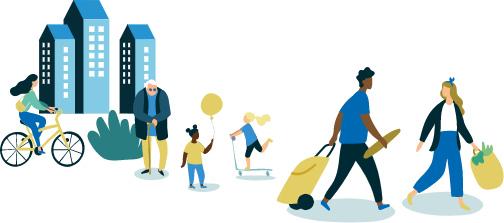Public transportation positively impacts a city in many ways. From reducing air pollution and road congestion, to providing an equitable travel opportunity, and stimulating local business in your city – public transportation is an invaluable asset for thriving communities.
However, many cities have only begun to explore what’s possible. To improve ridership and tackle looming sustainability goals, cities need to look to the future of the passenger experience. And that will mean making transit as effortless as just ‘deciding to go’.
If cities and operators can provide this future sooner, they’ll be better placed to solve the immediate challenges of ridership, revenue and environmental targets. They’ll also be in a position to make public transit a self-sustaining system. One that commuters, visitors, students and day-trippers will choose to use again and again, for years to come.
Soon, passengers won’t have to worry when they travel
Achieving your city’s wider strategic goals, like reducing emissions and increasing ridership is only possible with a seamless passenger experience. What often gets in the way is friction in the riding experience.
Public transport becomes an exercise in mental gymnastics when riders aren’t completely certain they’re going to make it to their destination effortlessly. The level of inconvenience spans from a minor waste of time, to an experience so bad they never take public transportation again.
By mental gymnastics, we mean questions like:
- Have I got the right change?
- Have I got the right ticket?
- Have I got my bus pass on me?
- Do I need to download an app?
- Do I have proof that I am eligible for a concession?
- Is there somewhere I can pick up an e-bike at my destination?
The more questions and uncertainty, the more people’s anxiety increases. Each point of friction that can be removed should be for effortless movement. To drive modal shift from private cars to public transport, the experience has to be as convenient as, “I get in my car, I drive to where I’m going, and I park.”
While driving a car has its own set of uncertainties, the list of questions is much shorter. The more public transit can do to remove uncertainty, the better.
The future of the passenger experience is simply this: in your city, passengers won’t have any questions – either because accurate answers will be in the palm of their hands, or because they won’t even need to ask.
Soon, passengers won’t need tickets, a prepaid card or even phone battery
In many cities, riders are already able to travel with just their phones. Fumbling with cash and tickets is becoming a thing of the past. Where the technology is available, most riders prefer to use a bank card, smart watch, or phone to tap and go. The passenger knows the fare payment will be adjusted to the best price, without any extra thought or additional effort on their part – with fare caps and concessions automatically calculated in a back office.
This is account-based ticketing, and it offers many benefits to operators too. You can charge riders different amounts based on multiple factors like zones and peak times. You can apply concessions based on their profile’s eligibility status. You can provide passengers with an experience that’s simple, convenient, and cost-effective.
Cities such as Edinburgh, Clermont Ferrand, and Helsinki have already seen the positive impact of the tap-and-go switch. The easier it is to book and pay for fares, the more citizens and tourists will patronise your public transportation. That fare revenue can then be invested back into more sustainable, passenger-centric, revenue-increasing initiatives.
Soon, a passenger’s phone won’t even need to be turned on to interact with ticket validators. They won’t need to worry about the battery running out. As long as their phone or smart device is switched to a ‘transit mode’, the passenger will be able to scan it on an EMV reader as they enter and exit a station or board a bus, and the correct charge will be made.
Soon, passengers will plan more than their journey at a station or in an app
As public transportation recalibrates following the devastating impact on ridership resulting from the pandemic, a new kind of self service has the opportunity to take the centre stage, and will play a major role in transport networks operating in a leaner, more efficient way.
For example, although there remains a place for 1-2-1 customer service, many transport hubs are introducing a new breed of multi-service ticketing machines on concourses and platforms.
These kiosks do more than simply print tickets, their user-friendly touch screen interfaces are like giant smartphones, providing applications to access journey planning, travel information, and local services like taxi bookings and bike hire.
Crucially, they provide 24-hour support, connecting passengers on-demand to experienced, virtual customer service assistants.. Riders can ask questions and get support when needed, removing many of the questions that arise when travelling. Flowbird provides a range of multi-service kiosks with applications like these, which are durable, protect against card fraud, and accept open payments.
Traditional travel has changed since 2020, which means the methods for how we travel have to change, too. Innovation and ease will get more passengers riding through our cities once again.
The future of the passenger is already here
The future of public transportation is exciting. To flash forward to what can be achieved in the near future in a city near you, take a trip to Monaco. The city supports 30,000 active users a month on their Mobility-as-a-Service app, powered by Flowbird, and generates around €40,000 revenue. Through one centralised app (Monapass), citizens and tourists are able to:
- Search for parking
- Pay for parking
- Select a bus
- Pay for a bus ticket
- Follow the bus on its route
- Access bikes and scooters
- Purchase tickets for museums, bus tours, football games, cinema, and more
By streamlining the journey and destination into one app, Monaco has found a way to capitalise on the destination rather than just the journey. Afterall, rarely does someone take a bus ride to take a bus ride. Rather, they’re travelling with the intention to get where they want to go.
Monaco’s account based ticketing system applies concessions within the app. Operators can also adjust payments as needed. This means when the city is especially congested, it’s simple to drop the cost of public transportation to discourage single occupancy vehicle travel.
All of these innovations contribute towards increasing ridership, supporting the city’s sustainability goals and improving the city’s attractiveness as a destination for visitors.
To learn how to create the same experience in your city, take a look at how we partnered with the city Monaco.

 International
International  Flowbird Systems Go Live in Madeira
Flowbird Systems Go Live in Madeira  The next poster cities for mobility
The next poster cities for mobility  What politicians and policy makers need to know about MaaS
What politicians and policy makers need to know about MaaS  MaaS start small and scale up
MaaS start small and scale up  Flowbird Pay-by-Plate Pay Stations Launch in the City of New York
Flowbird Pay-by-Plate Pay Stations Launch in the City of New York  Lyon chooses Flowbird for the implementation of its new progressive parking policy
Lyon chooses Flowbird for the implementation of its new progressive parking policy  Is MaaS an essential foundation for liveable cities?
Is MaaS an essential foundation for liveable cities? 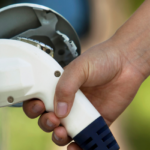 Wyre Forest District Council car parks to have electric vehicle (EV) chargers installed
Wyre Forest District Council car parks to have electric vehicle (EV) chargers installed 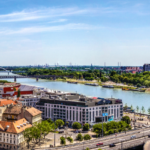 Flowbird Supplies 500 Pay and Display Parking Meters in Bratislava!
Flowbird Supplies 500 Pay and Display Parking Meters in Bratislava!  MaaS: What cities need to do to make it work
MaaS: What cities need to do to make it work 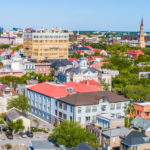 Charleston, SC Updates Its Parking System with Effortless Digital Solutions
Charleston, SC Updates Its Parking System with Effortless Digital Solutions  Clearwater, Florida Launches Pay by Text Solution – No App or Account Required
Clearwater, Florida Launches Pay by Text Solution – No App or Account Required  Carlisle, PA To Update Its Parking System with User-Friendly Solution in 2024
Carlisle, PA To Update Its Parking System with User-Friendly Solution in 2024  Open Payments Launched In Toulouse – Contactless Card Validation!
Open Payments Launched In Toulouse – Contactless Card Validation!  Flowbird and Semitan join forces to make mobility effortless!
Flowbird and Semitan join forces to make mobility effortless!  Meet the Team: David Thompson
Meet the Team: David Thompson 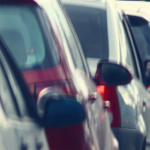 Solving traffic flow – what politicians and policymakers need to know
Solving traffic flow – what politicians and policymakers need to know 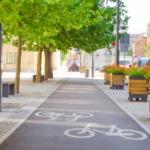 The future of the roadside curb
The future of the roadside curb 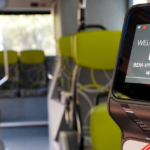 The future of the passenger experience and why effortlessness is the key
The future of the passenger experience and why effortlessness is the key 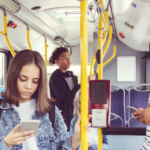 A guide to your city’s passengers: What you need to know
A guide to your city’s passengers: What you need to know 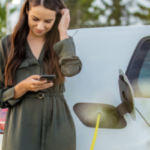 The 4 roadblocks in your city’s e-mobility plan
The 4 roadblocks in your city’s e-mobility plan 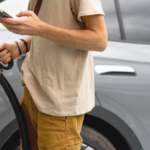 The road to zero-emissions cities (and, the parking when we get there)
The road to zero-emissions cities (and, the parking when we get there)  Why wait to decarbonise our regions?
Why wait to decarbonise our regions? 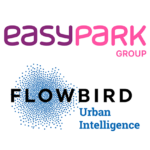 Flowbird Group takes a step forward in reshaping mobility through a strategic acquisition by EasyPark Group
Flowbird Group takes a step forward in reshaping mobility through a strategic acquisition by EasyPark Group  Park&Charge: Meet our expert
Park&Charge: Meet our expert 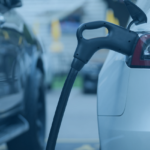 Flowbird gives cities a fast-track to e-mobility readiness
Flowbird gives cities a fast-track to e-mobility readiness 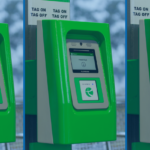 Coming soon to Perth: ‘tap to ride’ with your bank card or device
Coming soon to Perth: ‘tap to ride’ with your bank card or device  What’s next after open-loop transit payments?
What’s next after open-loop transit payments?  What would motivate you to use your car less?
What would motivate you to use your car less? 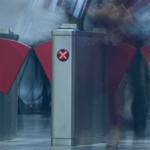 How to Boost the Efficiency of Fare Collection
How to Boost the Efficiency of Fare Collection 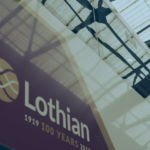 Lothian Buses new record: 100,000 taps in a day!
Lothian Buses new record: 100,000 taps in a day! 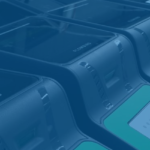 Smart Transport Ticketing: Benefits for Operators and Passengers
Smart Transport Ticketing: Benefits for Operators and Passengers 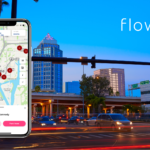 Flowbird App Empowers Tampa’s Parking Experience with Multi-App Integration
Flowbird App Empowers Tampa’s Parking Experience with Multi-App Integration  Meet the team: Justin Pounder
Meet the team: Justin Pounder 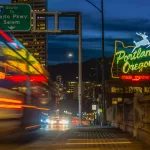 Flowbird, Umojo Partner for Off-Street Solution in Portand
Flowbird, Umojo Partner for Off-Street Solution in Portand 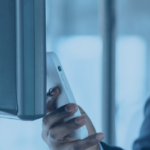 Cash versus digital payments in mobility systems
Cash versus digital payments in mobility systems  Flowbird teams up with Zuora to advance digitalisation and growth
Flowbird teams up with Zuora to advance digitalisation and growth  Flowbird app & Pay by Text now available in Sewickley!
Flowbird app & Pay by Text now available in Sewickley!  FabMob and Flowbird lead the way for accessible, sustainable mobility
FabMob and Flowbird lead the way for accessible, sustainable mobility  Passenger apps: Take 5 operator benefits
Passenger apps: Take 5 operator benefits 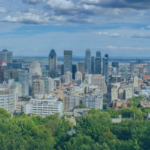 Contactless Interac Debit fare payments launch on Laval buses
Contactless Interac Debit fare payments launch on Laval buses  Edinburgh tramline extended to provide a route across the city
Edinburgh tramline extended to provide a route across the city  Take 5… Transport authority benefits of Account Based Ticketing
Take 5… Transport authority benefits of Account Based Ticketing  Parkex | Birmingham | 2023
Parkex | Birmingham | 2023  Flowbird Partners with the City of Minneapolis to Launch New & Improved MPLS Parking App
Flowbird Partners with the City of Minneapolis to Launch New & Improved MPLS Parking App 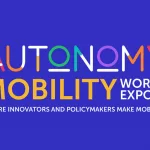 Flowbird presents its vision for connected urban mobility at AMWE in Paris
Flowbird presents its vision for connected urban mobility at AMWE in Paris 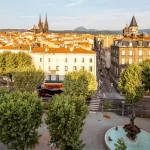 Clermont Ferrand makes the move to open payments on transport
Clermont Ferrand makes the move to open payments on transport 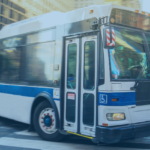 Flowbird’s transport talking points at Transport Ticketing Global
Flowbird’s transport talking points at Transport Ticketing Global 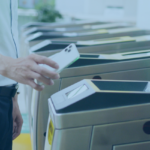 Take 5… Operator benefits of open payments in transport
Take 5… Operator benefits of open payments in transport 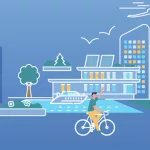 Flowbird envisions the transport ticket of tomorrow
Flowbird envisions the transport ticket of tomorrow  Ticketing & payments – a vital enabler of National Bus Strategy
Ticketing & payments – a vital enabler of National Bus Strategy 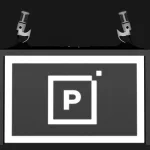 Flowbird announce new additions to the management team further to accelerate growth ambitions within the UK parking sector
Flowbird announce new additions to the management team further to accelerate growth ambitions within the UK parking sector  New London Brings Additional Convenience Parkers with Flowbird App
New London Brings Additional Convenience Parkers with Flowbird App  Podcast: Will transport payments drive a MaaS revolution?
Podcast: Will transport payments drive a MaaS revolution?  Take 5… Passenger benefits of open payments on transport
Take 5… Passenger benefits of open payments on transport  South Orange Parking Authority Updates Its Parking System with User-Friendly Solution
South Orange Parking Authority Updates Its Parking System with User-Friendly Solution 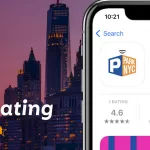 New ParkNYC App Proves to be Unrivaled Success in First 30 Days
New ParkNYC App Proves to be Unrivaled Success in First 30 Days 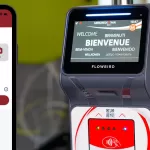 Monapass – One App, One Account, for Open Ticket Mobility
Monapass – One App, One Account, for Open Ticket Mobility 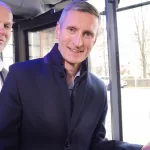 Translink Milestone for National Account Based Ticketing System for Northern Ireland
Translink Milestone for National Account Based Ticketing System for Northern Ireland  Flowbird Announces New CEO
Flowbird Announces New CEO  Flowbird unveils Off-Street Solution at IPMI 2022
Flowbird unveils Off-Street Solution at IPMI 2022  Flowbird is featured in the “Ticketing in Mobility as a Service” handbook published by UITP & STA
Flowbird is featured in the “Ticketing in Mobility as a Service” handbook published by UITP & STA  Flowbird Group acquires Your Parking Space
Flowbird Group acquires Your Parking Space  Transport Ticketing Global | London | 2022
Transport Ticketing Global | London | 2022 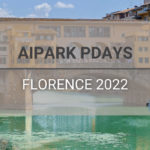 AIPARK Pdays | Florence | 2022
AIPARK Pdays | Florence | 2022 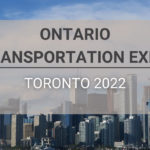 Ontario Transportation Expo | Toronto | 2022
Ontario Transportation Expo | Toronto | 2022 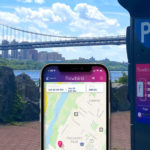 Flowbird Implements Automated Parking System To Palisades Interstate Parks
Flowbird Implements Automated Parking System To Palisades Interstate Parks  Smart City Forum | Warsaw | 2022
Smart City Forum | Warsaw | 2022 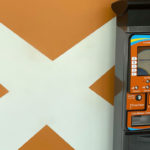 Birmingham Jefferson County Transit Authority Partners with Flowbird
Birmingham Jefferson County Transit Authority Partners with Flowbird 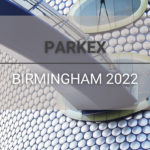 PARKEX | Birmingham | 2022
PARKEX | Birmingham | 2022 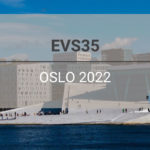 EVS35 | Oslo | 2022
EVS35 | Oslo | 2022 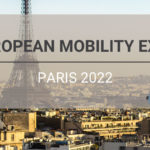 European Mobility Expo | Paris | 2022
European Mobility Expo | Paris | 2022  Konferencja SPP | Grudziądz | 2022
Konferencja SPP | Grudziądz | 2022  Svepark Conference | Gävle | 2022
Svepark Conference | Gävle | 2022 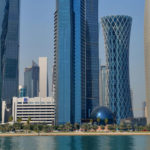 Milipol Qatar 2022
Milipol Qatar 2022 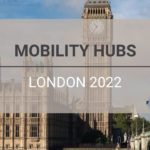 Mobility Hubs | London | 2022
Mobility Hubs | London | 2022  MILIPOL Qatar | Doha | 2022
MILIPOL Qatar | Doha | 2022 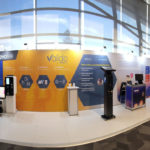 A look back at the PACE 2022
A look back at the PACE 2022  Thank you for visiting us at Intertraffic Amsterdam
Thank you for visiting us at Intertraffic Amsterdam 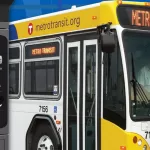 Flowbird Group to Expand Off-Board Fare Payments for Metro Transit
Flowbird Group to Expand Off-Board Fare Payments for Metro Transit 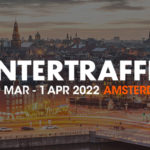 Intertraffic | Amsterdam | 2022
Intertraffic | Amsterdam | 2022 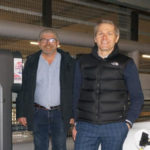 Flowbird completes first ever local authority Electric Vehicle charge point project for Wokingham Borough Council
Flowbird completes first ever local authority Electric Vehicle charge point project for Wokingham Borough Council  Podcast: the rise of open payments in transport
Podcast: the rise of open payments in transport 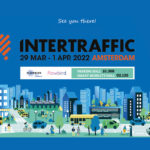 See you soon at Intertraffic Amsterdam 2022!
See you soon at Intertraffic Amsterdam 2022!  Flowbird is excited to share with you the latest news about Hong Kong!
Flowbird is excited to share with you the latest news about Hong Kong! 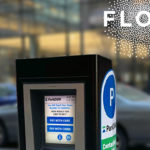 City of Des Moines upgrades to smart multi-space technology with Flowbird Group
City of Des Moines upgrades to smart multi-space technology with Flowbird Group 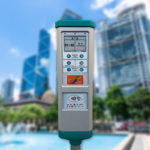 Flowbird trusted by HKT for their Smart City program
Flowbird trusted by HKT for their Smart City program 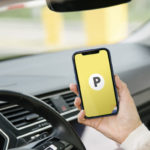 Flowbird announces a licensing agreement with Concar
Flowbird announces a licensing agreement with Concar 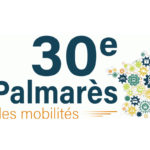 Mobility Awards City Rail & Transport
Mobility Awards City Rail & Transport  A great strategic win in Hamburg
A great strategic win in Hamburg 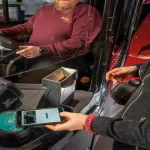 Lothian Adopts Weekly Capping with Support from Flowbird
Lothian Adopts Weekly Capping with Support from Flowbird 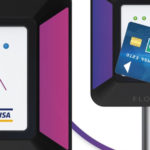 Tisséo, Flowbird and CIC deploy Open Payment in Toulouse
Tisséo, Flowbird and CIC deploy Open Payment in Toulouse 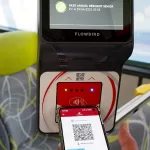 International Spotlight falls on MaaS in Monaco
International Spotlight falls on MaaS in Monaco 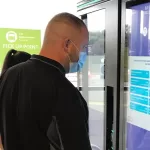 Northern Completes Major UK On-Station Rail Retailing Rollout
Northern Completes Major UK On-Station Rail Retailing Rollout  Flowbird Transforms Urban Mobility in Monaco
Flowbird Transforms Urban Mobility in Monaco 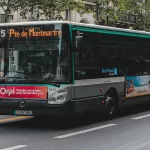 Conduent Transportation and Flowbird Selected to Equip Paris Ile-de-France Mobilités’ Buses and Trams with Next-Generation Onboard Ticketing Platform
Conduent Transportation and Flowbird Selected to Equip Paris Ile-de-France Mobilités’ Buses and Trams with Next-Generation Onboard Ticketing Platform  Flowbird’s Open Payments Expertise Wins Innovation Award
Flowbird’s Open Payments Expertise Wins Innovation Award  STL teams up with Flowbird and other new business partners to deliver a Québec First ― Next-generation credit card payment solution on all Laval buses
STL teams up with Flowbird and other new business partners to deliver a Québec First ― Next-generation credit card payment solution on all Laval buses 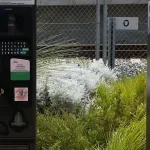 Flowbird Extends Ticketless Parking Across Transperth SmartRider Network
Flowbird Extends Ticketless Parking Across Transperth SmartRider Network 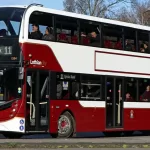 One million ‘taps’…and counting
One million ‘taps’…and counting 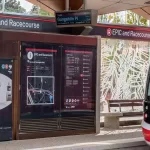 Canberra Launches Smart City Light Rail Network with Flowbird Technology
Canberra Launches Smart City Light Rail Network with Flowbird Technology 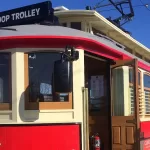 Flowbird Releases Mobile Ticketing App – ‘Loop Trolley’ App is Now Live in St. Louis, Missouri
Flowbird Releases Mobile Ticketing App – ‘Loop Trolley’ App is Now Live in St. Louis, Missouri 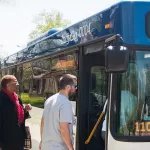 IndyGo Partners with Flowbird to Modernise Fare Collection System
IndyGo Partners with Flowbird to Modernise Fare Collection System 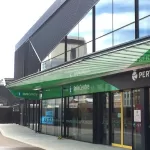 Transperth Extends Partnership with Flowbird Transport Intelligence
Transperth Extends Partnership with Flowbird Transport Intelligence 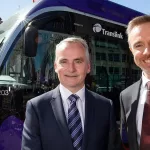 World-class ticketing system glides into Belfast
World-class ticketing system glides into Belfast 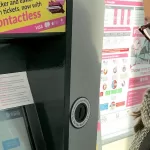 Edinburgh Trams Taps into Contactless Benefits
Edinburgh Trams Taps into Contactless Benefits 